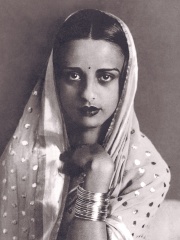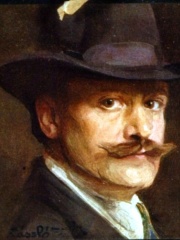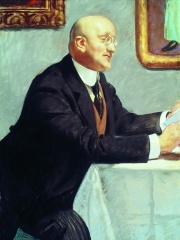







The Most Famous
PAINTERS from Hungary
Top 10
The following people are considered by Pantheon to be the top 10 most legendary Hungarian Painters of all time. This list of famous Hungarian Painters is sorted by HPI (Historical Popularity Index), a metric that aggregates information on a biography's online popularity. Visit the rankings page to view the entire list of Hungarian Painters.

1. István Sándorfi (1948 - 2007)
With an HPI of 70.58, István Sándorfi is the most famous Hungarian Painter. His biography has been translated into 47 different languages on wikipedia.
István Sándorfi (In France Étienne Sandorfi; 12 June 1948 – 26 December 2007) was a Hungarian hyperrealist painter.

2. Mihály Munkácsy (1844 - 1900)
With an HPI of 64.04, Mihály Munkácsy is the 2nd most famous Hungarian Painter. His biography has been translated into 30 different languages.
Mihály Munkácsy (Hungarian pronunciation: [ˈmihaːli ˈmuŋkaːtʃi]; 20 February 1844 – 1 May 1900) was a Hungarian painter. He earned international reputation with his genre pictures and large-scale biblical paintings.

3. Mihály Zichy (1827 - 1906)
With an HPI of 63.90, Mihály Zichy is the 3rd most famous Hungarian Painter. His biography has been translated into 22 different languages.
Mihály Zichy (Hungarian pronunciation: [ˈmihaːj ˈzit͡ʃi]; German: Michael von Zichy; 15 October 1827 – 28 February 1906) was a Hungarian painter and graphic artist. He is considered a notable representative of Hungarian romantic painting. He lived and worked primarily in St. Petersburg and Paris during his career. He is known for illustrating the Georgian epic poem The Knight in the Panther's Skin on an 1881 commission by the intelligentsia. By the time he had completed 35 pictures, he was so moved by the poem that he gave his works to the Georgian people as a gift.

4. Amrita Sher-Gil (1913 - 1941)
With an HPI of 62.46, Amrita Sher-Gil is the 4th most famous Hungarian Painter. Her biography has been translated into 54 different languages.
Amrita Sher-Gil (30 January 1913 – 5 December 1941) was a Hungarian–Indian painter. She has been called "one of the greatest avant-garde women artists of the early 20th century" and a pioneer in modern Indian art. Drawn to painting from an early age, Sher-Gil started formal lessons at the age of eight. She first gained recognition at the age of 19, for her 1932 oil painting Young Girls. Sher-Gil depicted everyday life of the people in her paintings. Sher-Gil traveled throughout her life to various countries including Turkey, France, and India, deriving heavily from precolonial Indian art styles as well as contemporary culture. Sher-Gil is considered an important painter of 20th-century India, whose legacy stands on a level with that of the pioneers from the Bengal Renaissance. She was also an avid reader and a pianist. Sher-Gil's paintings are among the most expensive by Indian women painters today, although few acknowledged her work when she was alive.

5. Gyula Benczúr (1844 - 1920)
With an HPI of 61.66, Gyula Benczúr is the 5th most famous Hungarian Painter. His biography has been translated into 22 different languages.
Gyula Benczúr (28 January 1844 – 16 July 1920) was a Hungarian painter and art teacher. An "outstanding exponent of academicism", he specialized in portraits and historical scenes. He is "considered one of the greatest Hungarian masters of historicism".

6. Philip de László (1869 - 1937)
With an HPI of 61.63, Philip de László is the 6th most famous Hungarian Painter. His biography has been translated into 24 different languages.
Philip Alexius László de Lombos (born Fülöp Laub; Hungarian: László Fülöp Elek; 30 April 1869 – 22 November 1937), known professionally as Philip de László, was an Anglo-Hungarian painter known particularly for his portraits of royal and aristocratic personages. In 1900, he married the Anglo-Irish socialite Lucy Guinness, and he became a British subject in 1914. László's patrons awarded him numerous honours and medals. He was invested with the Royal Victorian Order by Edward VII in 1909 and, in 1912, he was ennobled by Franz Joseph I of Austria; becoming a part of the Hungarian nobility.

7. László Mednyánszky (1852 - 1919)
With an HPI of 61.17, László Mednyánszky is the 7th most famous Hungarian Painter. His biography has been translated into 20 different languages.
Baron László Mednyánszky, also known by his Latinized name Ladislaus Josephus Balthasar Eustachius Mednyánszky (Slovak: Ladislav Medňanský; 23 April 1852 – 17 April 1919), was a Slovak–Hungarian painter and philosopher, considered one of the most enigmatic figures in the history of Hungarian art. Despite an aristocratic background, he spent most of his life moving around Europe working as an artist. Mednyánszky spent considerable periods in seclusion but mingled with people across society – in the aristocracy, art world, peasantry and army – many of whom became the subjects of his paintings. His most important works depict scenes of nature and poor, working people, particularly from his home region in the Kingdom of Hungary. He is also known as a painter of scenes from Upper Hungarian/Slovak folklore.

8. Vilmos Aba-Novák (1894 - 1941)
With an HPI of 60.02, Vilmos Aba-Novák is the 8th most famous Hungarian Painter. His biography has been translated into 24 different languages.
Vilmos Aba-Novák (Hungarian: Aba-Novák Vilmos, until 1912: Hungarian: Novák Vilmos; March 15, 1894 – September 29, 1941) was a Hungarian painter and graphic artist. He was an original representative of modern art in his country, and specifically of its modern monumental painting. He was also the celebrated author of frescoes and church murals at Szeged and Budapest, and was officially patronized by the Hungarian nobility. As a fresco painter, he completed numerous state and church commissions (for example: the frescoes of the Roman catholic church in Jászszentandrás, the Heroes' Gate in Szeged, the frescoes of the Szent István mausoleum in Székesfehérvár) in 1937 he won the World Exhibition in Paris, in 1940 the XXII. Grand Prize of the Venice Biennale. Seeing his pictures at the Paris exhibition, Pablo Picasso asked: "Who is this barbarian genius?" The virtuoso style of his late paintings incorporated elements of expressionism and the formal language of the Italian Novecento. It is characterized by dynamic compositions painted with loud colors, inspired by monuments; his favorite subject was the world of the village fair and the circus. He used a brilliant technique to evoke the life of the people of the Great Plains - not without caricaturistic elements. His pictures are preserved in the Hungarian National Gallery and other public collections, as well as in many private collections.

9. József Rippl-Rónai (1861 - 1927)
With an HPI of 59.53, József Rippl-Rónai is the 9th most famous Hungarian Painter. His biography has been translated into 19 different languages.
József Rippl-Rónai (23 May 1861 – 25 November 1927) was a Hungarian painter. He was among the first Hungarian exponents of artistic modernism.

10. Igor Grabar (1871 - 1960)
With an HPI of 58.35, Igor Grabar is the 10th most famous Hungarian Painter. His biography has been translated into 26 different languages.
Igor Emmanuilovich Grabar (Russian: И́горь Эммануи́лович Граба́рь, 25 March 1871 – 16 May 1960) was a Russian Post-Impressionist painter, publisher, restorer and historian of art. Grabar, descendant of a wealthy Rusyn family, was trained as a painter by Ilya Repin in Saint Petersburg and by Anton Ažbe in Munich. He reached his peak in painting in 1903–1907 and was notable for a peculiar divisionist painting technique bordering on pointillism and his rendition of snow. By the end of 1890s, Grabar had established himself as an art critic. In 1902, he joined Mir Iskusstva, although his relations with its leaders Sergei Diaghilev and Mstislav Dobuzhinsky were far from friendly. In 1910–1915, Grabar edited and published his opus magnum, the History of Russian Art. The History employed the finest artists and critics of the period; Grabar personally wrote the issues on architecture that set an unsurpassed standard of understanding and presenting the subject. Concurrently, he wrote and published a series of books on contemporary and historic Russian painters. In 1913, he was appointed executive director of the Tretyakov Gallery and launched an ambitious reform program that continued until 1926. Grabar diversified the Tretyakov collection into modern art and in 1917 published its first comprehensive catalogue. In 1921 Grabar became the first professor of Art restoration at the Moscow State University. An experienced politician, Grabar stayed at the top of the Soviet art establishment until his death, excluding a brief voluntary retirement in 1933–1937. He managed art-restoration workshops (present-day Grabar Centre) during 1918–1930 and from 1944 to 1960. Grabar took active part in redistribution of former church art nationalized by the Bolsheviks and established new museums for the confiscated treasures. In 1943, he formulated the Soviet doctrine of compensating World War II losses with art looted in Germany. After the war, he personally advised Joseph Stalin on the preservation of architectural heritage.
People
Pantheon has 13 people classified as Hungarian painters born between 1811 and 1948. Of these 13, none of them are still alive today. The most famous deceased Hungarian painters include István Sándorfi, Mihály Munkácsy, and Mihály Zichy.
Deceased Hungarian Painters
Go to all RankingsIstván Sándorfi
1948 - 2007
HPI: 70.58
Mihály Munkácsy
1844 - 1900
HPI: 64.04
Mihály Zichy
1827 - 1906
HPI: 63.90
Amrita Sher-Gil
1913 - 1941
HPI: 62.46
Gyula Benczúr
1844 - 1920
HPI: 61.66
Philip de László
1869 - 1937
HPI: 61.63
László Mednyánszky
1852 - 1919
HPI: 61.17
Vilmos Aba-Novák
1894 - 1941
HPI: 60.02
József Rippl-Rónai
1861 - 1927
HPI: 59.53
Igor Grabar
1871 - 1960
HPI: 58.35
Lajos Tihanyi
1885 - 1938
HPI: 57.26
Katarina Ivanović
1811 - 1882
HPI: 56.42
Overlapping Lives
Which Painters were alive at the same time? This visualization shows the lifespans of the 13 most globally memorable Painters since 1700.



